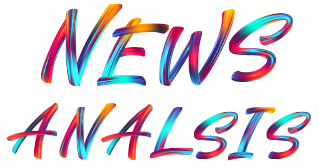A hair dryer that suddenly blows cold air can quickly disrupt your morning routine. This common problem is often caused by simple issues you can fix at home, from a clogged filter to incorrect settings. Understanding why your hair dryer won’t heat up is the first step to solving the issue, saving you time, frustration, and money. We will explore the most frequent causes and guide you on how to get your styling tool working again.
Start with the Simple Fixes: Power and Settings
Before assuming a major internal failure, always start with the most obvious potential problems. Many times, the reason a hair dryer stops heating is due to a simple oversight related to its power supply or settings. These checks take only a minute and can often resolve the issue instantly.
First, ensure the hair dryer is plugged securely into the wall outlet. A loose plug can prevent the device from drawing enough power to activate the heating element. Try plugging it into a different outlet to rule out a faulty socket. Many modern bathrooms have GFCI (ground fault circuit interrupter) outlets, which can trip easily. Look for a “Reset” button on the outlet and press it.
Next, double-check the hair dryer’s controls. Most models have a “cool shot” or “cool air” button that can be accidentally pressed. Make sure all switches are set to a heat setting and that the cool shot button is not engaged. It’s a surprisingly common user error that can lead to unnecessary panic.
Is a Clogged Air Intake Restricting Heat?
One of the leading causes of a hair dryer failing to heat is a blocked air intake. Over time, the vent on the back of the dryer collects dust, lint, and hair. When this vent gets clogged, it restricts the flow of air into the dryer.
This lack of airflow causes the internal components to overheat. As a safety measure, a built-in thermal fuse or cutoff switch will disable the heating element to prevent a fire or damage to the motor. The fan may still work, but you will only get cool air. Regular cleaning is essential to prevent this from happening.
Fortunately, cleaning the air filter is an easy task you can do at home. Here’s how to do it safely:
- Unplug the Hair Dryer: Never attempt to clean or perform maintenance on an electrical appliance while it is plugged in.
- Locate and Remove the Rear Filter: Most hair dryers have a removable cap or screen on the back. This might twist off or unclip.
- Clean the Debris: Use a soft brush (like an old toothbrush) or a cloth to gently wipe away all the accumulated lint and dust from the filter screen and the intake area.
- Reassemble and Test: Once the filter is clean, secure it back in place, plug the dryer in, and test it to see if the heat has returned.
When Internal Parts Fail: The Heating Element and Thermal Fuse
If you’ve checked the power and cleaned the filter but still have no heat, the problem might be an internal component. The two most likely culprits are the heating element and the thermal fuse.
The heating element is a coil of wire that glows red hot when electricity passes through it, generating the heat that dries your hair. If this coil breaks or burns out, the dryer will no longer produce heat. A broken thermal fuse, on the other hand, is a safety component. If the dryer has overheated severely in the past, this fuse may have blown permanently to cut power to the heating element.
A clear sign of a failed thermal fuse is a dryer that runs normally but only blows cold air. Replacing these parts can be complex and may require disassembling the hair dryer. While replacement parts are often inexpensive, the repair process can be difficult for those without experience in electronics. For safety reasons, if you suspect a faulty internal part, it may be best to consult a professional or consider replacing the unit.
Don’t Ignore Damaged Cords and Plugs
The power cord is another critical component that can cause heating issues. Constant winding, twisting, and pulling can damage the internal wires over time, even if there’s no visible fraying on the outside. This damage can interrupt the electrical circuit that powers the heating element.
Inspect the entire length of the cord for any signs of wear, such as cracks, exposed wires, or kinks. Pay close attention to the area where the cord enters the dryer’s handle, as this is a common stress point. If you notice any damage, stop using the hair dryer immediately. Using a device with a damaged cord is a significant fire and electrical shock hazard.
Quick Troubleshooting Guide
When your hair dryer isn’t working correctly, it helps to have a quick reference. Use this table to diagnose the most likely cause based on the symptoms your dryer is exhibiting.
| Symptom | Possible Cause | Solution |
| Dryer blows only cold air, fan works fine. | Cool shot button engaged, clogged filter, or broken thermal fuse/heating element. | Check settings, clean the air filter, or consider professional repair/replacement. |
| Dryer works for a few minutes, then shuts off. | Overheating due to a clogged air intake. | Unplug the dryer, let it cool completely, then thoroughly clean the filter. |
| Dryer won’t turn on at all. | Not plugged in, tripped GFCI outlet, or internal electrical failure. | Check the plug, reset the outlet, or try a different outlet. If it still doesn’t work, replace the unit. |
| You smell burning or see sparks. | Serious internal damage to the motor or wiring. | Stop use immediately and unplug. Do not attempt to repair. The unit should be replaced. |
When to Repair and When to Replace
Deciding whether to fix a broken hair dryer or buy a new one depends on a few factors. If the issue is a simple fix like a clogged filter, it is always worth addressing. For more complex internal problems, you should consider the cost and age of your dryer.
If your hair dryer is relatively new and was expensive, checking its warranty or getting a repair quote might be worthwhile. However, for most standard, budget-friendly models, the cost of professional repair often exceeds the price of a brand-new dryer. Given that newer models often come with improved technology and safety features, replacement is frequently the more practical and safer option.
Frequently Asked Questions
Why is my hair dryer blowing cold air all of a sudden?
The most common reasons are that the cool shot button is pressed, the air intake filter is clogged with lint causing it to overheat and shut off the heat, or an internal component like the thermal fuse has failed. Start by checking the settings and cleaning the filter.
Can I fix a broken heating element in my hair dryer?
While it is possible to replace a heating element, it requires disassembling the dryer and handling electrical components. For safety and practicality, this type of repair is often best left to a professional or bypassed in favor of replacing the dryer, especially if it is an older model.
How often should I clean my hair dryer’s filter?
For optimal performance and safety, you should check and clean your hair dryer’s air filter at least once a month. If you use it daily or notice a decrease in airflow, you may need to clean it more frequently, such as once a week.
Is it safe to use a hair dryer that keeps shutting off?
No, it is not safe. A hair dryer that repeatedly shuts off is a clear sign that it is overheating, which poses a fire risk. This is typically caused by a blocked air vent that needs to be cleaned immediately. If cleaning doesn’t solve the problem, stop using the dryer.








Leave a Comment